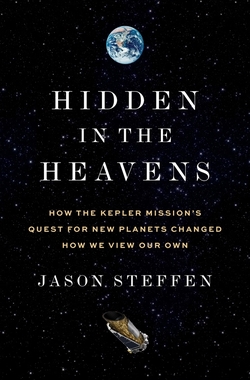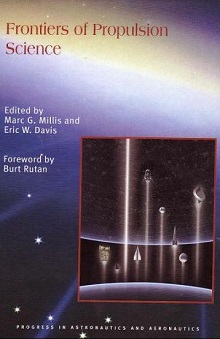We need to get to the ice giants. We have limited enough experience with our system’s larger gas giants, although orbital operations at both Jupiter and Saturn have been highly successful. But about the ice giants, their formation, their interiors, their moons (and even the possibility of internal oceans on these objects), we draw on only a single mission, Voyager II. Which is why the April 2022 decadal study (“Origins, Worlds, and Life: A Decadal Strategy for Planetary Science and Astrobiology 2023-2032”) recommended a Uranus mission, complete with orbiter, to be launched in the late 2030s. Can we do this under our existing paradigm for space exploration? A new paper titled “Science opportunities with solar sailing smallsats,” written by the Jet Propulsion Laboratory’s Slava Turyshev and co-authored by major proponents of solar sail technologies, makes the case for coupling our abundant advances in miniaturization with our growing experience in solar sails to achieve missions at...
‘Oumuamua: Avi Loeb’s Response to the Molecular Hydrogen Theory
The enigmatic ‘Oumuamua continues to stir controversy. Last week we looked at a new paper from Jennifer Bergner (UC-Berkeley) and Darryl Seligman (Cornell University), discussing a mechanism for the interstellar object’s unusual non-gravitational acceleration. The researchers explored the possibility that ice impacted by high-energy particles like cosmic rays would dissociate water in a comet to create molecular hydrogen within the ice. Was the warming of this hydrogen, all but undetectable according to the authors, the cause of outgassing and the anomalous acceleration? Image: This very deep combined image shows the interstellar object ‘Oumuamua at the center of the image. It is surrounded by the trails of faint stars that are smeared as the telescopes tracked the moving comet. Credit: ESO/K. Meech et al. Answering the question in a paper just submitted to the arXiv site is Harvard’s Avi Loeb, working with Thiem Hoang (Korea University of Science and Technology), who home in on...
Ring of Life? Terminator Habitability around M-dwarfs
It would come as no surprise to readers of science fiction that the so-called ‘terminator’ region on certain kinds of planets might be a place where the conditions for life can emerge. I’m talking about planets that experience tidal lock to their star, as habitable zone worlds around some categories of M-dwarfs most likely do. But I can also go way back to science fiction read in my childhood to recall a story set, for example, on Mercury, then supposed to be locked to the Sun in its rotation, depicting humans setting up bases on the terminator zone between broiling dayside and frigid night. Addendum: Can you name the science fiction story I’m talking about here? Because I can’t recall it, though I suspect the setting on Mercury was in one of the Winston series of juvenile novels I was absorbing in that era as a wide-eyed kid. The subject of tidal lock is an especially interesting one because we have candidates for habitable planets around stars as close as Proxima Centauri, if...
A New Explanation for ‘Oumuamua’s Acceleration
Here’s a thought that puts a different spin on exoplanet studies. The speaker is Darryl Seligman (Cornell University): "The comets and asteroids in the solar system have arguably taught us more about planet formation than what we've learned from the actual planets in the solar system. I think that the interstellar comets could arguably tell us more about extrasolar planets than the extrasolar planets we are trying to get measurements of today." Seligman’s comment plays into the growing interest in interstellar objects that drift into our Solar System like 1/I ‘Oumuamua and 2/I Borisov. These may be the initial members of what is actually a large class of debris from other stars that we are only now learning how to detect. Among the many things we have yet to refine in our understanding of ‘Oumuamua is its actual size. Projections of 115 by 111 by 19 meters are deduced from its brightness and the changes produced by its apparently tumbling motion. The interstellar interloper is too...
Interstellar Research Group: 8th Interstellar Symposium Second Call for Papers
Abstract Submission Final Deadline: April 21, 2023 The Interstellar Research Group (IRG) in partnership with the International Academy of Astronautics (IAA) hereby invites participation in its 8th Interstellar Symposium, hosted by McGill University, to be held from Monday, July 10 through Thursday, July 13, 2023, in Montreal, Quebec, Canada. This is the first IRG meeting outside of the United States, and we are excited to partner with such a distinguished institution! Topics of Interest Physics and Engineering Propulsion, power, communications, navigation, materials, systems design, extraterrestrial resource utilization, breakthrough physics Astronomy Exoplanet discovery and characterization, habitability, solar gravitational focus as a means to image exoplanets Human Factors Life support, habitat architecture, worldships, population genetics, psychology, hibernation, finance Ethics Sociology, law, governance, astroarchaeology, trade, cultural evolution Astrobiology Technosignature...
Alpha Centauri: TOLIMAN Moves Forward
The problem with Alpha Centauri is that the system is too close. I don’t refer to its 4.3 light year distance from Sol, which makes these stars targets for future interstellar probes, but rather the distance of the two primary stars, Centauri A and B, from each other. The G-class Centauri A and K-class Centauri B orbit a common barycenter that takes them from a maximum of 35.6 AU to 11.2 AU during the roughly 80 year orbital period. That puts their average distance from each other at 23 AU. So the average orbital distance here is a bit further than Uranus’ orbit of the Sun, while the closest approach takes the two stars almost as close as the Sun and Saturn. Habitable zone orbits are possible around both stars, making for interesting scenarios indeed, but finding out just how the system is populated with planets is not easy. We’ve learned a great deal about Proxima Centauri’s planets, but teasing out a planetary signature from our data on Centauri A and B has been frustrating despite...
The Latest from New Horizons
New Horizons is, like the two Voyagers, a gift that keeps on giving, even as it moves through the Kuiper Belt in year 17 of its mission. Thus the presentations that members of the spacecraft team made on March 14 at the 54th Lunar and Planetary Science Conference. Papers will flow out of these observations, including interpretations of the twelve mounds on the larger lobe of Arrokoth, the contact binary that is being intensely studied through stereo imaging to identify how these features formed around a larger center mound. Alan Stern (SwRI) is principal investigator for the New Horizons mission: “We discovered that the mounds are similar in many respects, including their sizes, reflectivities and colors. We believe the mounds were likely individual components that existed before the assembly of Arrokoth, indicating that like-sized bodies were formed as precursors to Arrokoth itself. This is surprising, and a new piece in the puzzle of how planetesimals – building blocks of the...
Oceanic Surprise: Pushing Europa’s Ice
Getting Europa Clipper to its target to analyze the surface of Jupiter’s most interesting moon (in terms of possible life, at least) sets up a whole range of comparative studies. We have been mining data for many years from the Galileo mission and will soon be able – at last! – to compare its results to new images pulled in by Europa Clipper’s flybys. Out of this comes an interesting question recently addressed by a new paper in JGR Planets: Is Europa’s ice shell changing in position with time? An answer here would establish whether we are dealing with a free-floating shell moving at a different rate than the salty ocean beneath. Computer modeling has previously suggested that the ocean’s effects on the shell may affect its movement, but this is evidently the first study that calculates the amount of drag involved in this scenario. Ocean flow may explain surface features Galileo revealed, with ridges and cracks as evidence of the stretching and straining effects of currents below....
Tracing Water through the Stages of Planet Formation
The presence of water in the circumstellar disk of V883 Orionis, a protostar in Orion some 1300 light years out, is not in itself surprising. Water in interstellar space is known to form as ice on dust grains in molecular clouds, and clouds of this nature collapse to form young stars. We would expect that water would be found in the emerging circumstellar disk. What new work with data from the Atacama Large Millimeter/submillimeter Array (ALMA) shows is that such water remains unchanged as young star systems evolve, a chain of growth from protostar to protoplanetary disk and eventually planets and water-carrying comets. John Tobin, an astronomer at the National Science Foundation’s National Radio Astronomy Observatory (NRAO), is lead author on the paper on this work: “We can think of the path of water through the Universe as a trail. We know what the endpoints look like, which are water on planets and in comets, but we wanted to trace that trail back to the origins of water. Before...
How a Super-Earth Would Change the Solar System
If there is a Planet Nine out there, I assume we’ll find it soon. That would be a welcome development, in that it would imply the Solar System isn’t quite as odd as it sometimes seems to be. We see super-Earths – and current thinking seems to be that this is what Planet Nine must be – in other stellar systems, in great numbers in fact. So it would stand to reason that early in its evolution our system produced a super-Earth, one that was presumably nudged into a distant, eccentric orbit by gravitational interactions. The gap in size between Earth and the next planet up in scale is wide. Neptune is 17 times more massive than our planet, and four times its radius. Gas giant migration surely played a role in the outcome, and when considering stellar system architectures, it’s noteworthy as well that all that real estate between Mars and Jupiter seems to demand something more than asteroidal debris. To make sense of such issues, Stephen Kane (University of California, Riverside) has run...
DART’s Ejecta and Planetary Defense
I’m glad to see the widespread coverage of the DART mission results, both in terms of demonstrating to the public what is possible in terms of asteroid threat mitigation, and also of calming overblown fears that we have too little knowledge of where these objects are located. DART (Double Asteroid Redirection Test) was a surprisingly demonstrative success, shortening the orbit of the satellite asteroid Dimorphos by an unexpectedly large value of 33 minutes. The recoil effect from the ejection of asteroid material, perhaps as high as 0.5% of its total mass, accounts for the result. Watching the ejecta evolve has been fascinating in its own right, as the interactions between the two elements of the binary asteroid come into play along with solar radiation pressure. Asteroids have previously been observed that displayed a sustained tail, as Dimorphos did after impact, and the DART results suggest that the hypothesis of similar impacts on these objects is correct. Thus we learn valuable...

